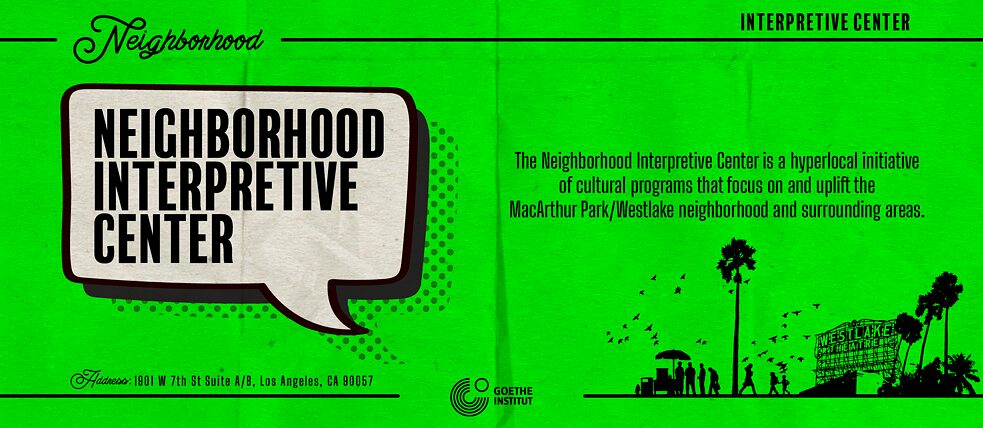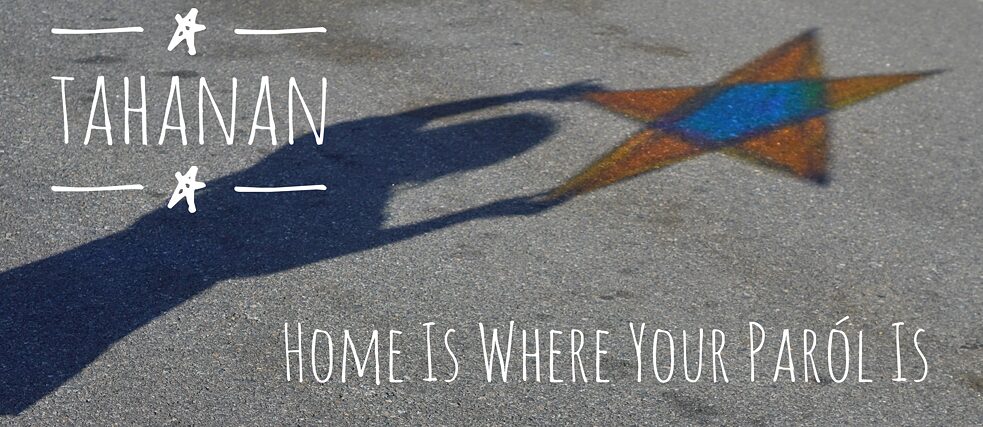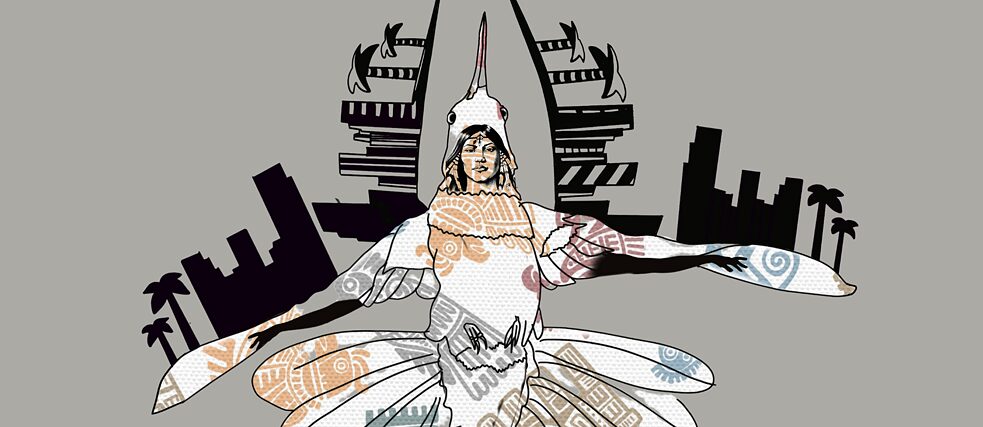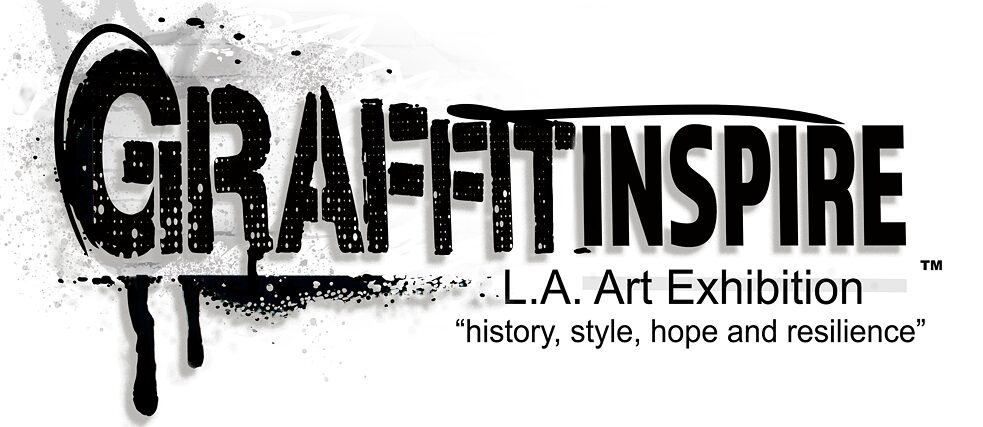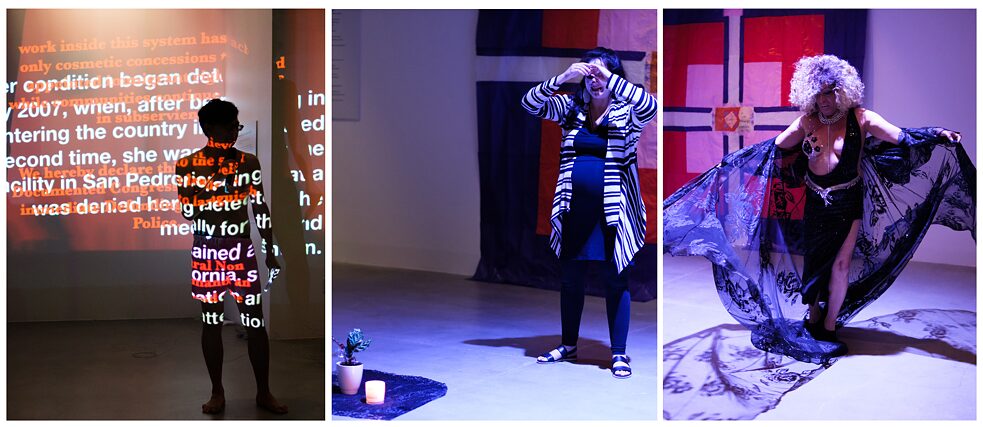Neighborhood Interpretive Center
About the Neighborhood Interpretive Center
The Neighborhood Interpretive Center is a hyperlocal neighborhood initiative of the Goethe-Institut in the diverse MacArthur Park neighborhood of Los Angeles, launched in 2021. Each fall, there is an open call for cultural practitioners and creative professionals to propose innovative cultural programs for the project space that engages with MacArthur Park and the surrounding neighborhood. Special consideration will be given to cultural practitioners and creatives who live or work in MacArthur Park or the surrounding area, as well as artists* who are considered underrepresented. Content focuses on supporting projects that demonstrate an understanding of the unique history and characteristics of the neighborhood, and celebrate cultural diversity. A committee selects 3-5 projects from a large number of submissions to be implemented and presented at the Goethe-Institut the following year.
The 2025 Open Call for Cultural Workers and Creatives submission period ended in February 2025. The selection committee chose three projects from a large number of proposals.
PUPPETMASTER'S PLAYGROUND
07/10/2025 - 09/04/2025PuppetMaster’s Playground is a creative and interactive installation led by Cain Carias (PuppetMaster 213), designed to inspire the community through puppetry, art, and storytelling. Built using repurposed dolls and handcrafted materials, this immersive experience showcases one-of-a-kind marionettes that reflect the vibrant culture and spirit of Los Angeles. Visitors can expect to explore custom-built puppets on display, participate in workshops to create their own puppets and engage in conversations around identity, community, and creativity. The project also includes neighborhood cleanups, community cookouts, and collaborations with local artists—making it more than an exhibit; it’s a movement centered on unity, imagination, and reclaiming public space through art.
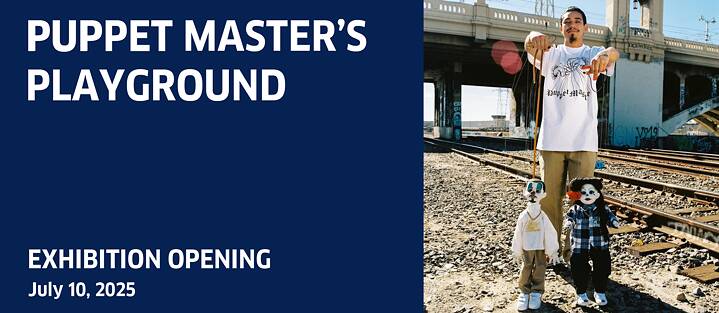
MI QUERIDO LOS ANGELES
09/18/2025 - 10/29/2025“Mi Querido Los Angeles” (My Dearest Los Angeles), a solo exhibition by Las Chicas Peligrosas (Jacquline Hernandez), features a series of screen prints centered on the people and culture of various neighborhoods throughout Los Angeles - sharing the reality many Angelenos face, the fear that one day we could become displaced. Featured neighborhoods include MacArthur Park, Pico-Union, Koreatown, and more. The exhibition creates a community-centered space for resources on tenant rights, ways to resist and fight gentrification. The Project seeks to actively engage with community members through a series of free printmaking workshops, offering participants the opportunity to share their stories and identify key places in their neighborhoods that have shaped their lives.
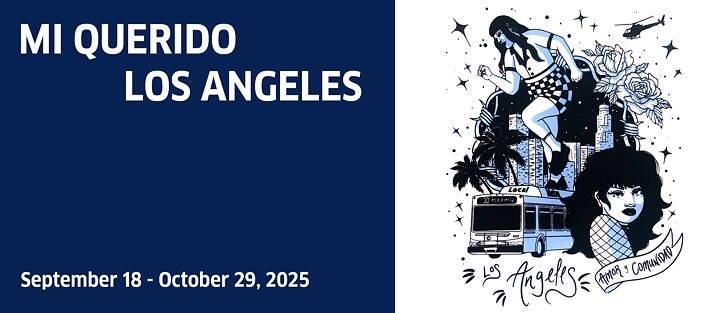
INNER LANDSCAPES
11/20/2025 - 01/29/2026Curated by artists and cultural workers Lauren Kim, Jane Zhang, Enoch Ma, and Hajo Holistic, Inner Landscapes reimagines MacArthur Park as a space of healing, drawing inspiration from the Neijing Tu 內經圖 (Diagram of Internal Pathways), a Taoist map depicting the human body as a microcosm of the universe. The project combines a mixed-media art installation with community-centered programming to highlight the profound relationship between the human body and the surrounding natural and urban landscapes.
Taking form as the five central organs of the Taoist body map and its related five elemental phases, the installation guides viewers through MacArthur Park’s history and context. The exhibition space will also serve as a venue for public workshops led by local traditional medicine practitioners, covering pulse-reading, applications of acupuncture for drug detoxification, and herbology. Inner Landscapes invites visitors to consider the possibilities of MacArthur Park not only as a physical space but as a dynamic site where past and present, body and environment, nature and culture, intersect in meaningful ways.
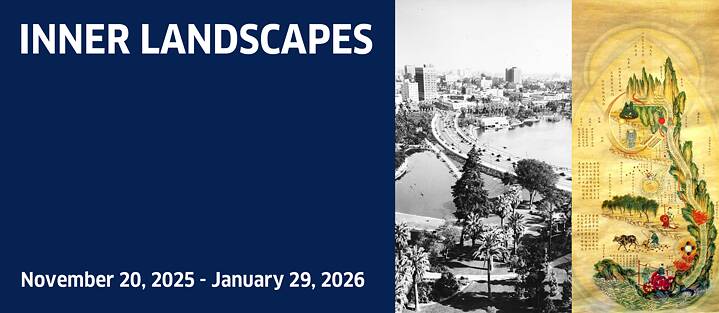
DOWN UNION
09/06/2024 - 12/08/2024
Curated by Melina Cruz Bautista, DOWN UNION transformed the Goethe-Institut Project Space into an interdisciplinary, multigenerational group showcase that highlighted the work of artists from the Pico-Union, Westlake, and Echo Park neighborhoods. Through photographs, poems, music, and paintings, DOWN UNION captured the essence of these communities' rich cultural histories and offered a platform for conversation and community engagement. As Melina and her childhood friend and artist, Kristal Torres reflected on the effects of displacement and rent increases in their neighborhoods, the exhibition’s title, DOWN UNION emerged.Accompanying programs, events and communal celebrations offered an opportunity to engage with the extended community through proposed financial literacy & mental health workshops crucial resources for Indigenous families and neighbors within the community, fostering holistic approaches to well-being.
This exhibition included contributions from Kristal Torres, Luis Angel, Sandra Maldonado, Alan Mejia, Maria Paula Benicio, Angel Cruz, Anahi Cruz Bautista, Jackie Hernandez, Socorro Galindo, Vida Con Mel & more.

VOICES OF EXPERIENCE
06/20/2024 - 07/19/2024
Developed and curated by Los Angeles-based artist Anne Kim, "Voices of Experience" is an intergenerational and multilingual interdisciplinary project that aims to amplify the rich narratives of community elders residing near the Goethe-Institut in McArthur Park. Four elders were selected from this vibrant community and participated in a collaborative choreographic process. The culmination of this endeavor was an immersive storytelling exhibition at the Goethe-Institut Los Angeles Project space that included special live performances and workshops. Voices of Experience integrated projection, film, dance, audio, and visual arts, creating a compelling exploration of our elders’ diverse experiences and perspectives.

INSIDE|OUTSIDE
02.08.2024 – 03.08.2024
Curated by Homies Unidos, the interdisciplinary exhibition INSIDE|OUTSIDE seeks to raise awareness about the challenges faced by immigrants entangled in the criminal justice system. Many of these individuals, at risk of deportation upon release, leave behind children and families who suffer their absence deeply. In presenting the work and poetry of currently and formerly incarcerated individuals and their families, INSIDE|OUTSIDE gives voice to their stories through their work, revealing their struggles, hopes, and dreams. This powerful showcase and the accompanying programs delve into the dual realities of being confined within prison walls and marginalized on the fringes of society upon release, confronting the harsh aspects of deportation, including the potential for re-incarceration in their home countries.Serving the Pico-Union, Westlake, and Koreatown communities, Homies Unidos presents trauma-informed and culturally competent art, education, and leadership development activities tied to social justice advocacy programs.

Tahanan: Home Is Where Your Paról Is
11/02 - 12/15/2023
"Tahanan,” the Tagalog word for “home,” can be anywhere for millions of Filipinos around the world: whether in the Philippines, the United States, or the many other countries to which they have immigrated. With immigration comes feelings of fear and displacement, and immigrants often embrace old traditions to help overcome adversity and feel closer to their heritage. For Filipinos, one of those traditions is the paról—ornamental stars that are hung near the front of the home, to be seen by visitors and passers-by. Not only have they become a symbol for the Christmas season, but also a symbol of solidarity in the Filipino community. The paról connects them through shared experience and signals, “A Filipino lives here.”Whether homemade or store-bought, it’s a tradition that Filipino immigrants have brought with them into the diaspora—a relic of their upbringing that makes their adoptive countries feel more like home. For the Neoghborhood Interpretive Center program, artist Jaana Baker transformed the exhibition space of the Goethe-Institut Los Angeles into a colorful, illuminated celebration of the Filipino-American experience with her large-scale installation “Tahanan: Home Is Where Your Paról Is.”
Unlocking Sacred Spaces-The Public Art Movement in MacArthur Park
9/1 - 10/6/2023
The story of how Public Art can return the land back to the people. In this program curated by Marlené Nancy Lopez Artists united to create interactive public art installations that demonstrate the power of “Functional Community Art” to shed light upon the unseen, fight gentrification, decolonize and create radical connections. Together the installations called upon the creation of permanent Public Art spaces that can be activated by NGOS, Activists and Artists for ceremony and programming in Los Angeles’ most vulnerable communities.While on view at the Goethe-Institut, installation lead artist, Marlené Nancy Lopez, and the first generation of Art Corps artists hosted story-art circles, documentary screenings, discussions and art happenings to explore the mission and provide examples of future programming and ceremony possible in these sacred spaces. In the spirit of the “Aesthetics of the Oppressed”, the exhibition served as a launching point to begin legal and political negotiations for the permanent installation of the art pieces in MacArthur Park.
Graffitinspire
5/12 - 7/7/2023
In celebration of 40th anniversary of Radiotron Hip Hop youth center that opened across from MacArthur Park in 1983, the Goethe-Institut was the venue for GRAFFITINSPIRE. This multidisciplinary graffiti art exhibit featured artists that attended the Radiotron as teens or were inspired by the graffiti art movement and participated in other projects organized by Youth and Culture Advocate Carmelo Alvarez. These iconic Los Angeles graffiti artists and crews have influenced the art form worldwide. Additional programming events for GRAFFITINSPIRE included Hip Hop elements workshops (breaking, popping, DJs, rapping, beat boxing, graffiti art) as well as film screenings.This exhibition included contributions from PHANTOM STREET ARTI$T, HEX,
JERO, SHANDU, CRIME, DEFER, MOEZART, HEAVEN, PRIME, ENKONE, ANDO PNDLIAN, SAINT Flims, KALM, ZENDER, THANKS, DEITY, SWAN, OLDSKOOL, ZUCO, GERMIZM, RELIC, KING-CRE8, SIGIE, GARM, CRAKA, NOTIK, THUNDR, VOX, RESEK, AISEBORN & MORE.
Read more about the Graffitinspire program in the Hyperallergic article by Matt Stromberg:
"Radiotron, the ’80s Youth Center That Shaped LA’s Hip-Hop Scene"
How to: Community Engagement
12/6/2022
Encuentros-Encounters
9/23 - 11/17/2022
Serving the Pico-Union, Westlake, and Koreatown communities, Homies Unidos presents trauma-informed and culturally competent art, education, and leadership development activities tied to social justice advocacy programs. For their project, the Goethe-Institut Project space served as a venue for "Encuentros-Encounters," offering an intergenerational and cross-cultural dialogue around pressing social issues such as immigration, mass incarceration, and climate change. At the heart of the ENCUENTROS exhibition is the series LLAMAME POR MI NOMBRE, curated by local contemporary artist Kiara Aileen Machado, and includes her own works, as well as the works created by the participants from Homies Unidos' youth programs. Public events included artist talks, film screenings, musical performances, and educational workshops focusing on inter-communal solidarity and art production. Together with Creating Creators, a partnership with schools in the neighborhood was initiated to visit and engage with the projects of the Neighborhood Interpretive Center.THE FRIDA KAHLO THEATER: Disrupting the Mainstream
8/19 - 9/16/2022
For thirty-five years, Grupo de Teatro SINERGIA has produced predominantly original works in Spanish and English. The plays have been directed and performed by L.A. Latinx/Mexican and Central American theatre artists. In 1994, under the Artistic Direction of Rubén Amavizca-Murúa, the group moved into what is now The FRIDA KAHLO Theater in the Westlake district of Los Angeles. The group's productions focus on historical, political, and social themes that are relevant to and directly affect the primarily immigrant community. These original productions have also toured both nationally and in Mexico. Some of the original works presented by the group have also been produced in Belgium, Latvia, and Spain.The Goethe-Institut Project space served as the venue for "The FRIDA KAHLO Theater - Disrupting the Mainstream," a Spanish and English language audio-visual retrospective and exhibition that documents the history of the FRIDA KAHLO Theater and its impact on the community, highlighting the group's most significant productions. In addition to plays, the exhibit featured work generated by young artists and community members in the form of photography, animation, and theatre for youth. A panel discussion with FRIDA KAHLO Theater artists, L.A. historians, journalists, and scholars placed the theater's body of work in a cultural and historical context.
Voices in the Water
6/25 - 7/23/2022
Vibing with Cultural Leafs
4/1 - 5/6/2022
With the understanding that cultural awareness can help us better understand differences and cross barriers, cultural worker Pauletta Pierce led an eight-week workshop for Westlake community members aged 13-24 who have little or no experience in the arts that explored how bias and information are processed as a way of understanding culture. At the Goethe-Institut, Pierce implemented Zaretta Hammond's "Culture Tree" teaching model, where participants constructed a mixed media Culture Tree presentation called "Vibing with Cultural Leafs." With an emphasis on the rich, diverse cultural history of the Westlake/MacArthur Park neighborhood and cooperation with local artists like Pop Locker Street Dancer O.G. Jeckle, teaching artist Joan Zamora, and Youth IT Video Creator Angelique R. Hurtado, various disciplines, including dance, video production, and street art, were integral parts of the workshops. The project culminated with a public presentation of the participants' "Culture Tree" at the Goethe-Institut.TRANZA XIII
4/9/2022
LA’s only queer performance art nightCreated in 2009 as a space to produce and curate queer performance art nights at various contended sites throughout LA, Tranza showcases various artists, performances, and disruptions/reclamations of historically and traditionally queer/immigrant/trans spaces struggling to survive gentrification, displacement, and rampant violence. Creator and producer Byron collaborated and engaged in discourse with LA-based artists whose work centers, raises consciousness, and stems from the artistry and work of various comunidades en lucha, through a multi-issue lens.
Tranza’s 13th-anniversary installation was presented as part of the Festival de Barriletes exhibit at Goethe-Institut in MacArthur Park.
Festival de Barriletes
3/26 - 5/31/2022
Disruptive Representation and the Limits of Diversity
2/26/2022
In partnership with the Thomas Mann House, a series of discussions accompanied the Neighborhood Interpretive Center. On February 26th at 11am at the Goethe-Institut, Mohamed Amjahid, Thomas Mann House Fellow, journalist and author of the book "Der weiße Fleck" (Whitewash. A Guide to Antiracist Thinking), and Alice Hasters, journalist and author of the bestselling book "Was weiße Menschen nicht über Rassismus hören wollen, aber wissen sollten" (What White People don't want to hear About Racism, but Should Know) discussed the topic of "Disruptive Representation and the Limits of Diversity." Diversity is seen as the solution to structural oppression. Although it is an inevitable step towards a more just society, it will not be enough to dismantle a system based on inequality. Companies and institutions often seem to settle for a superficial approach to diversity - providing a certain look - without any interest in driving real change forward. This may benefit individuals but ultimately helps to secure the status quo, which is the exclusion and exploitation of many for the advantage of a few. Representation only helps if it is disruptive to structures of oppression. How can we prevent the idea of diversity from being tokenized? And: How can we make sure that the pressure of changing these systems is not solely placed on the ones who are burdened with the responsibility of representation?